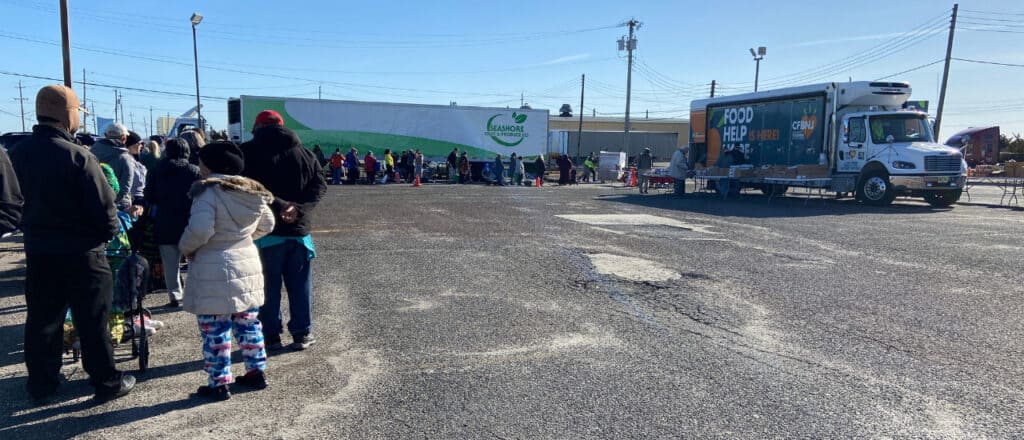New data from Feeding America reveals a troubling reality: nearly 1.1 million people in New Jersey are food insecure — a staggering 65% increase since the height of the COVID-19 pandemic in 2020. Among them are more than 270,000 children, as child food insecurity has soared by 54%. These figures come from Map the Meal Gap, Feeding America’s annual study that tracks hunger at the national, state, and county levels.
Why the surge?
What’s driving this alarming trend? A combination of factors: rising costs of everyday essentials, the end of pandemic-related federal aid, and wages that simply aren’t keeping up. And New Jersey is already one of the most expensive states in the nation to live in. Meanwhile, uncertainty around future federal funding and policy decisions threatens to deepen the crisis. For families already walking a financial tightrope, even small changes in household budgets — rising grocery bills, rent hikes, medical expenses — can push them over the edge.
About Map the Meal Gap
Now in its fifteenth year, Map the Meal Gap remains the only study that offers detailed, local-level estimates of food insecurity and food costs across every county and congressional district in the U.S. This year’s report builds on the USDA’s latest national and state data from 2023. It serves as a critical tool for policymakers, advocates, and anti-hunger organizations to understand where the need is greatest — and how to best respond.
Key statistics: summarizing findings
Food insecurity exists in every part of New Jersey, but its impact varies by location, income, age, and race. The data reveals not only how widespread hunger is — but also the deep disparities behind it. Learn more about who’s most affected across the state.
Food insecurity by geography
- Food insecurity exists in all 21 New Jersey counties.
- Nearly 1.1 million people (1 in 9) in New Jersey are food insecure, including over 270,000 children (1 in 7). This is a 9.5% increase year over year.
- In CFBNJ’s South Jersey service area (Atlantic, Cape May, and Cumberland Counties), more than 70,000 people are food insecure, including over 20,000 children.
Income, food spending, and program eligibility
- In New Jersey, 45% of people facing hunger may not qualify for SNAP benefits due to income thresholds.
- Food budget shortfall reflects the extra money that people who are food insecure report needing to cover their food needs. The Garden State has an estimated shortfall of more than $772.8 million, $23.39 per week per person.
Food insecurity by age, race, and ethnicity
- 8.8% of seniors in New Jersey are food insecure (1 in 11). The number of food insecure seniors in New Jersey increased by 26% year-over-year, almost three times the size of the increase among the general population.
- Food insecurity among Black and Latino neighbors in New Jersey is at 24% (1 in 4) and 22% (1 in 5), respectively, about 3/3.5 times higher than among white New Jerseyans at 7% (1 in 14). These disparities are an example of how historical, social, economic and environmental factors have held many communities of color back, creating barriers to food security.
How you can help
As we face rising food insecurity and increased need for food assistance, now is the time to step up and help our neighbors in need. You can support CFBNJ by:
- Donating: Your generosity makes a critical difference in ensuring that no one in New Jersey goes hungry. Every $1 donated helps provide three nutritious meals.
- Learning: Working to understand the current landscape of food insecurity and the public programs that address it.
- Volunteering: Give your time to get hands-on in support of our mission.
- Connecting with Legislators: Make your voice heard! Let lawmakers know that you support CFBNJ’s work and critical programs, like SNAP, WIC, and school meals. It’s critical for your representatives to hear from you that Congress should not cut the food security programs that feed individuals and families across the nation.


